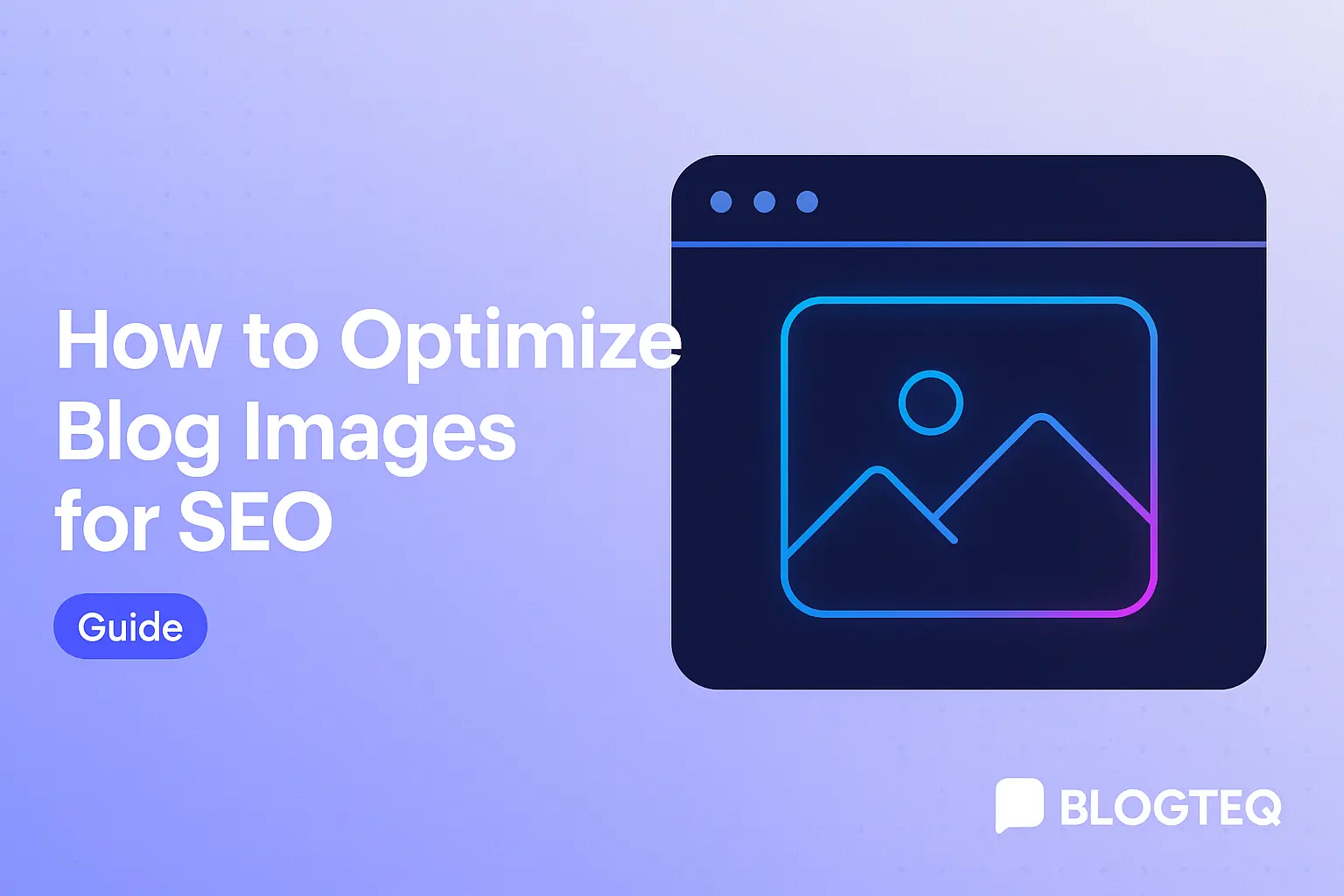How to Optimize Blog Images for SEO
---
How to Optimize Blog Images for SEO: Quick Answer
To achieve the best image SEO for blogs, ensure your images are well-compressed, have descriptive file names, utilize targeted image alt text SEO, and follow seo image best practices like choosing the right format and using structured data where possible. Effective image optimization improves your blog’s rankings, site speed, and user experience which are paramount for business professionals aiming to boost their blog performance in 2025.
---
1. Use Descriptive Filenames for Better Image SEO for Blogs
Many bloggers upload images named IMG_0034.jpg, but search engines can't interpret this. Instead, use keyword-rich, descriptive filenames like image-seo-for-blogs-diagram.png. This helps Google understand the context and content of your images, giving them a chance to rank in image search results.
How-to Example:
Instead of photo123.jpg, use optimize-blog-images-steps.png.
---
2. Optimize Blog Images with Proper Compression
Large images slow down your site, hurting both user experience and SEO. Image compression for SEO reduces file size without sacrificing quality.
Actionable Steps:
- Before upload: Use tools like TinyPNG or ImageOptim to compress images.
- On WordPress: Consider plugins like Imagify or ShortPixel.
- Recommended formats:
- Use WebP for most blogs in 2025 (better compression and quality).
- Use PNG only for images requiring transparency.
- For simple graphics, SVG is scalable and lightweight.
---
3. Leverage Image Alt Text SEO
Alternate text (alt text) helps search engines and visually impaired users understand what your images depict. Well-crafted image alt text SEO includes your target keywords without stuffing, describing the image contextually.
Practical Example:
For a graph showing bounce rate improvement:
Bad: image1.png with alt text graph
Good: bounce rate decrease after optimize blog images - example graph
Tips:
- Keep it under 125 characters.
- Include the primary keyword if it’s natural.
- Every image should have unique, relevant alt text.
---
4. Follow 2025 SEO Image Best Practices
The landscape for seo image best practices continues to evolve. In 2025, these are the essentials:
- Responsive Images: Use srcset in HTML or your CMS to serve different image sizes for different devices.
- Lazy Loading: Defer image loading until a user scrolls them into view, improving initial site speed. Most modern CMS platforms support this natively now.
- Structured Data: Use schema markup (like ImageObject) for images critical to your blog’s content (e.g., infographics or author photos).
- Sitemaps: Ensure your XML sitemap includes image URLs, making it easier for Googlebot to discover and index visuals.
---
5. Step-by-Step: How to Optimize Blog Images Before Publishing
Step 1: Choose or design an image relevant to your post.
Step 2: Name the image descriptively with target keywords, e.g., image-seo-for-blogs-guide-2025.png.
Step 3: Resize to the maximum display size needed (e.g., 1200px wide for banners).
Step 4: Compress using TinyPNG or Squoosh.
Step 5: Add it to your CMS with keyword-optimized image alt text SEO, e.g., “Optimized blog post banner showing image SEO for blogs best practices in 2025”.
Step 6: Enable lazy loading in your site settings or by adding loading="lazy" to your
Step 7: Check your XML sitemap for inclusion and validate using Google Search Console.
---
FAQ: Image SEO for Blogs
Q1: Why is image SEO important for blogs in 2025?
A: With visual content becoming more prominent, optimized images mean faster load times, better rankings, and enhanced accessibility.
Q2: What is image compression for SEO?
A: It’s the process of reducing image file size without significantly losing quality, directly improving site speed and performance.
Q3: How often should I use keywords in image alt text?
A: Only use keywords if they naturally fit the image description. Focus on relevance and user experience.
Q4: What tools are recommended for optimizing blog images?
A: TinyPNG, Squoosh, ImageOptim for compression; WordPress plugins like ShortPixel; browser DevTools for previewing effects.
---
Key Takeaways: Image SEO for Blogs
- Descriptive Filenames: Use primary and secondary keywords in image names.
- Image Compression for SEO: Always compress before upload; prefer modern formats like WebP.
- Strong Image Alt Text SEO: Write clear, relevant alt text—never stuff keywords.
- Implement SEO Image Best Practices: Use responsive images, lazy loading, structured data, and maintain an updated image sitemap.
Optimizing blog images is essential not just for search engines, but for your audience. Following these strategies will help business professionals stay ahead of 2025’s SEO curve and ensure their blogs perform at the highest level.
---
Need more tailored strategies? Let us know your blog challenges in the comments!
